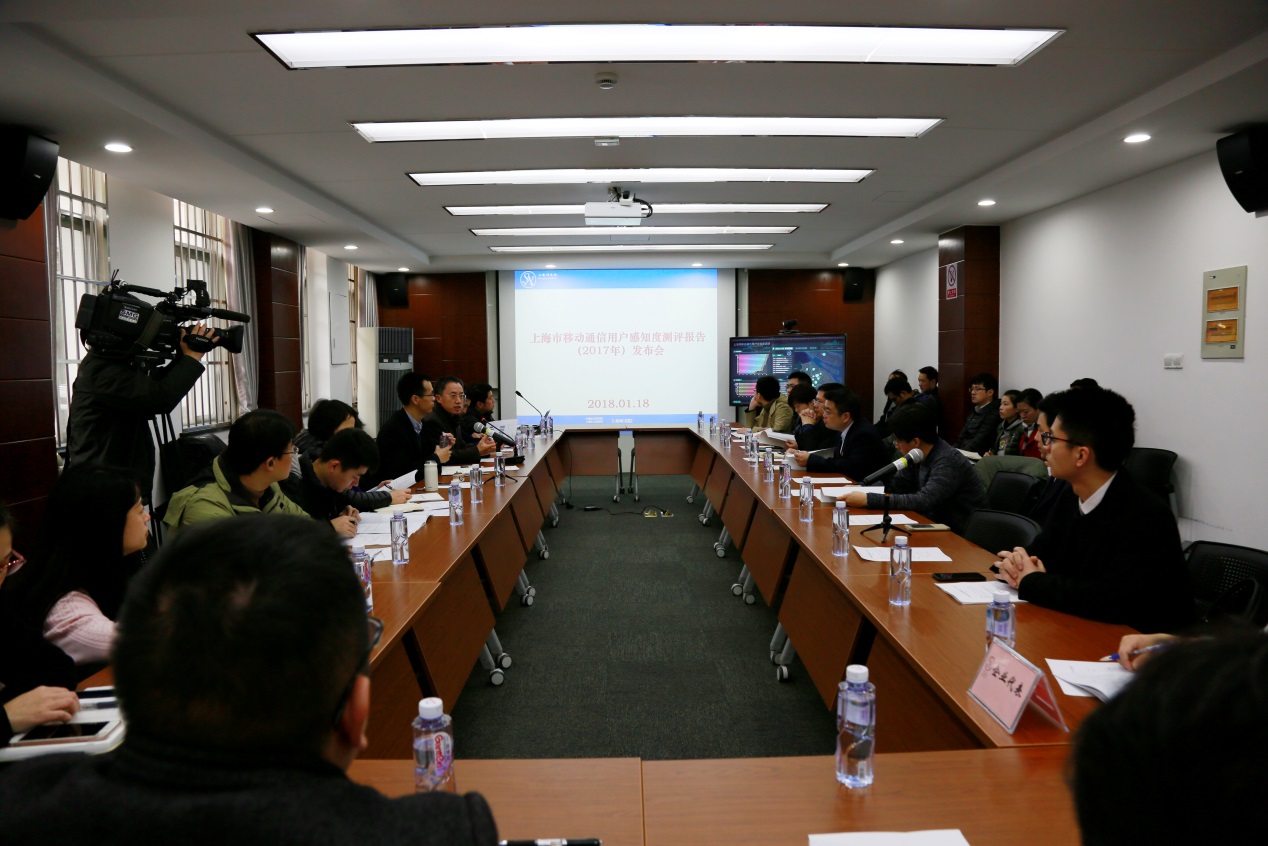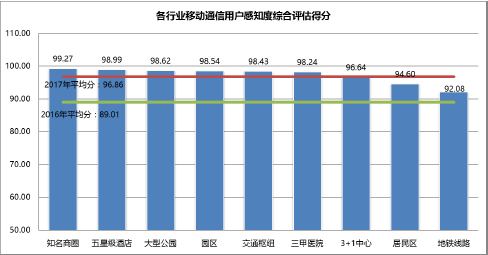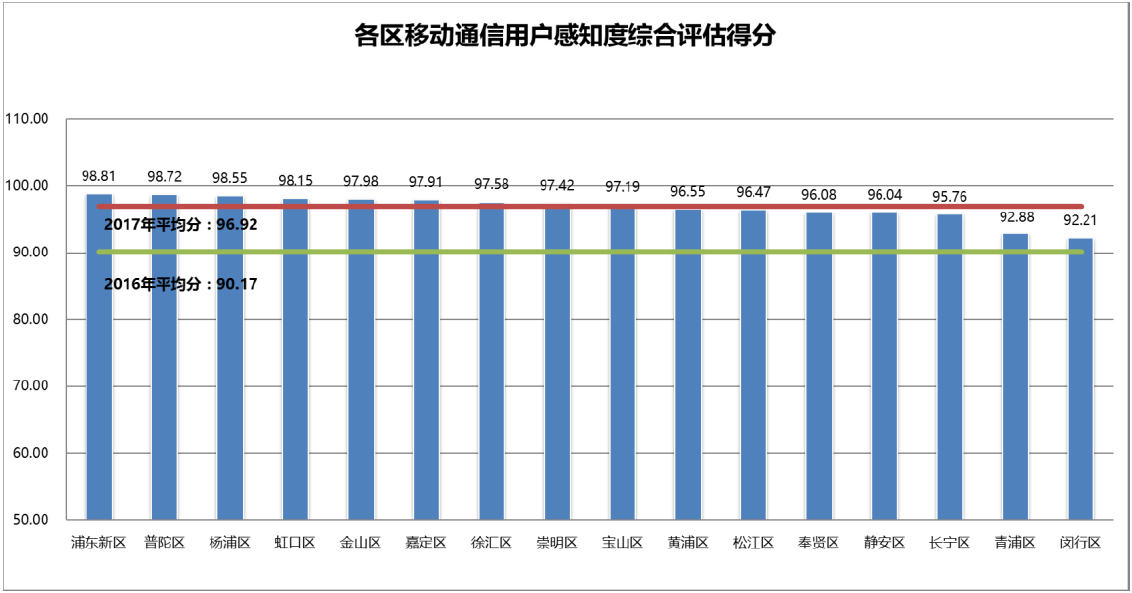——Shanghai Academy Releases its 2017 User Perception Evaluation Report on Mobile Communication

On January 18, Shanghai Academy released its 2017 User Perception Evaluation Report on Mobile Communication. Director Yang Huijun from the Secretariat of Shanghai Academy presided over the conference, and project leader and research fellow Li Meng from Shanghai Academy released the report.
According to the report, the overall perception of mobile communication users in Shanghai was generally good; with a significantly improved actual average download speed of up to 25.06Mb/s, up 73.9% from the previous year. This is an effective measure to build a world-class information infrastructure benchmarking city, by building Shanghai into an excellent global city with the highest standards at the best level comparative with the international benchmark.

From the perspective of test results, compared with the year prior, 2017 saw an obvious rise in perception from Shanghai’s mobile communication users. The average score of the industrial test hit 96.86, up by 8.8% year on year. Main business circles, five-star hotels, large parks, various industrial zones, and traffic hubs occupied the top five. The average score of each district was 96.92, a 7.5% increase YOY. Pudong, Putuo, Yangpu, Hongkou and Jinshan districts ranked in the first five, with Pudong New Area topping the user perception rating for the second year in a row, and Putuo and Xuhui districts making obvious advancement in their respective rankings.

According to the report, the evaluation paradigm for Shanghai’s mobile communication users was further improved in 2017. The test scenario is based on the combination of “static+dynamic” settings, according to the general idea of “7+X”. Shanghai would annually evaluate seven types of fixed places including Grade-III class A hospitals, traffic hubs, famous business circles, large parks, subway lines, residential quarters, and “3+1” centers of community affairs, community health and community culture, and dynamic types sites adjusted according to annual work requirements. A total of 1,109 places were involved in the test in 2017, covering Shanghai’s 26 main business circles, 40 large parks, 15 traffic hubs, 53 Grade III class A hospitals, 128 residential quarters, 14 subway lines and large interchange stations, 86 five-star hotels, 57 industrial zones, and 691 “3+1” community centers at street and township-level and administrative affair centers at district level.
In contrast to traditional communication network quality evaluations, the mobile communication user perception evaluation tests places and contents that are closer to the daily life and actual experience of users. The test subjects selected public places with strong public properties and prominent urban service functions, and concentrated areas for civic life. Indicators, set to simulate the daily behavior of users, will use more frequent data services as the main test items, such as video services, software applications, web browsing. The test results reflect user’s actual experience from the following three dimensions of industry, administrative district and operator, and help promote the joint efforts of industrial management departments, district-level governments, and operators to work together to optimize regional website coverage in line with local conditions.
According to research fellow Li Meng, since 2017, Shanghai Municipal Commission of Economy and Information Technology had put forward the overall arrangement for the construction of a new wireless city. Shanghai’s new wireless city construction would make a transformation from the improvement of “network indicators” to the upgrading of “ecological indicators”. Efforts are being made to achieve the integration network and city, digit and city, industry and city. Such projects as private MAN IoT, the next generation of wireless radio and television networks (NGB-W), gigabit access and WiFi public projects have entered the implementation phase in Yangpu and Hongkou districts.
In order to further improve the mobile communication user perception, the report made four suggestions. First, focus on the weak links and make up for the shortcomings in great earnest. For such industries and regions which ranked poorly in the evaluation for two successive years, the report suggested to put more resources, new technologies and new modes to make up for the network shortcomings. Second, strengthen the compartmentalized linkage and enhance multi-party cooperation. The report suggested that Shanghai Municipal Commission of Economy and Information Technology strengthen overall planning and enhance the linkage between the competent departments and operators of various districts. Third, optimize the evaluation system and strengthen institutional supply. In combination with the actual demands on Shanghai’s new wireless city construction, the report suggested to learn from the experience of developed countries and regions, and intensify institutional innovation to enhance the institutional supply in the field of information infrastructure construction. Fourth, improve the public welfare Wi-Fi coverage and eliminate information islands. The report suggested to further expand the coverage in fields closely related to people's livelihood services, including Grade-III class A hospitals, traffic hubs, famous business circles, and large parks.
Business executives from all levels of Shanghai government, news media, operating companies, and related scientific research institutions, trade organizations, representatives attended the release activities.
(by Li meng and Xiang Jinmei)